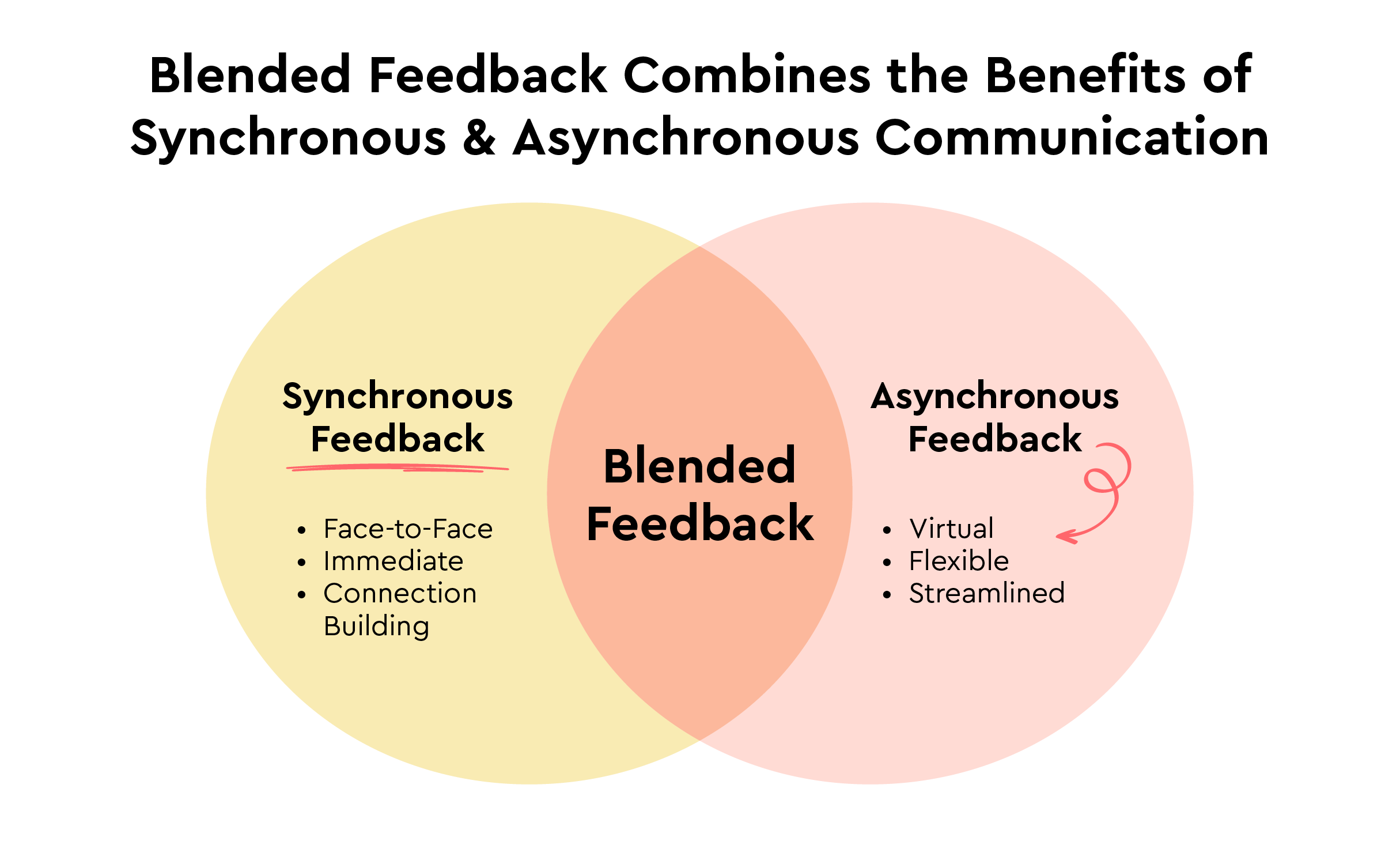Giving feedback in skills-based education is like judging competitive figure skating. You watch or listen carefully as learners demonstrate their skills, then have only a split second to evaluate the technical and stylistic aspects of their performance.
Whether you teach future nurses, educators, language learners, or actual figure skaters, the challenge is the same: how to give timely, targeted, actionable feedback that’s personalized for every student.
The most efficient and effective solution—if you’re ready to think outside the text box—is using blended feedback to coach, correct, and connect with learners in hybrid and online courses.
What Is Blended Feedback?
Blended feedback, also known as multimodal feedback, is any combination of written, audio, or video feedback. It blends the best aspects of synchronous and asynchronous interactions to make feedback easier for instructors to give, and easier for learners to understand and use.
When applied to skills-based education, blended feedback also gives instructors a way to provide verbal (not just written) critiques and to model proper techniques on video.
The Best of Both Feedback Worlds
In traditional, face-to-face courses, you can observe student presentations, performances, or skills demonstrations in real time, then give verbal critiques. And, critical for skill development, you can also show students what they’re doing wrong and how to do it right.
While synchronous feedback is immediate and helps build human connections, it’s constrained by time, location, and each learner’s ability to absorb and apply what they hear or see in the moment. In other words, you and your students have to be in the same place at the same time, and they have to understand and remember everything you say.
Asynchronous feedback, on the other hand, offers greater flexibility for how and when you assess learning. It also gives students a takeaway, usually in the form of written comments, that they can reflect on as they practice and improve their skills.
By expanding asynchronous feedback to include audio and video responses, you can leverage the verbal and physical cues associated with synchronous feedback, while maintaining the flexibility of asynchronous delivery.

Using Blended Feedback
All feedback, regardless of delivery method, is a form of communication. Whether you use written, audio, or video feedback depends on what or how you’re trying to communicate.
In their guide to giving better feedback with technology, the Chronicle of Higher Education says, “Context is critical when it comes to using technology in your classroom and giving feedback.”
Here’s a summary of their best practices for using different types of feedback in the context of skills-based learning.
When to use written feedback.
- Rubrics. Text-based rubrics are best for communicating expectations because they give learners a visual checklist of required competencies and your grading criteria.
- Automated feedback. Some learning tools allow you to create and reuse visual or text-based markers to flag common mistakes and skills mastery. They help learners quickly identify where they excel and where they need more practice.
- Brief comments. If your feedback is brief and straightforward, it will likely take less time to create and consume in text format.
When to use audio and video feedback.
- Personalized or nuanced feedback. Audio and video add a personal touch to your feedback because students can hear your voice and/or see your face. It also captures your tone, which helps eliminate miscommunication and the perception that your feedback is more critical than intended.
- Process demonstrations. When demonstrating physical skills such as how to perform a specific medical procedure or form handshapes in American Sign Language, video allows you to not only tell but also show students how to improve. Audio alone is valuable for modeling competencies in speech, communications, and language courses.
- Lengthy comments. Most of us speak faster than we write, so if you have a lot to say, recording yourself speaking is a more efficient way to give personalized feedback to a class full of students. It may also be more effective because, according to research at Bournemouth University in the UK, many digital-natives comprehend information better when conveyed as sound versus text.
For Hybrid or Online Courses
As more skills-based programs transition to hybrid or online formats, blended feedback is emerging as a time-saving solution for instructors and a skill-building tool for students.
And, because audio and video recordings enable instructors to give more (and more nuanced/understandable) feedback in less time, students benefit from receiving both higher quality and a greater quantity of feedback to help improve their skills.
The key takeaway: Your feedback should be crystal clear—unlike the scoring system for competitive figure skating, which remains a mystery to those of us without blades on our boots.
Request a demo to see how GoReact enables blended feedback for video assessment in skills-based education.







